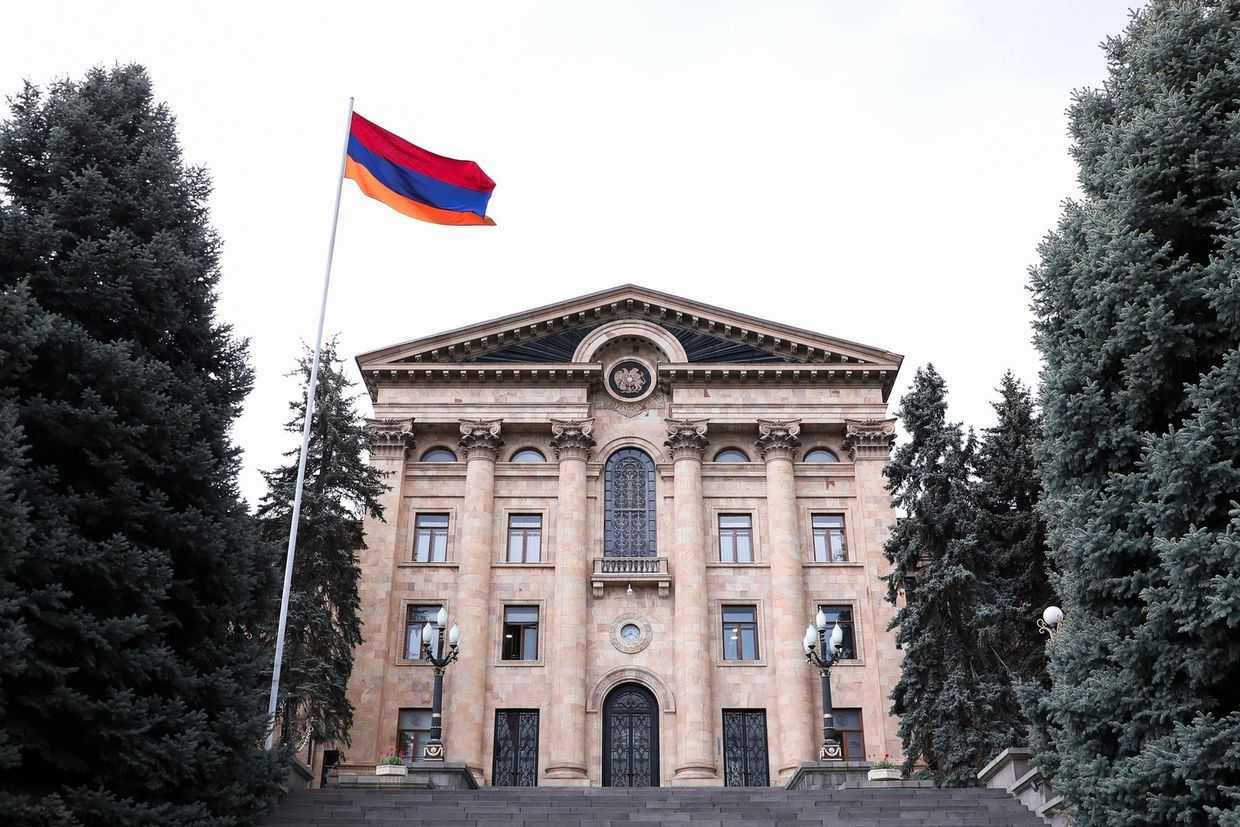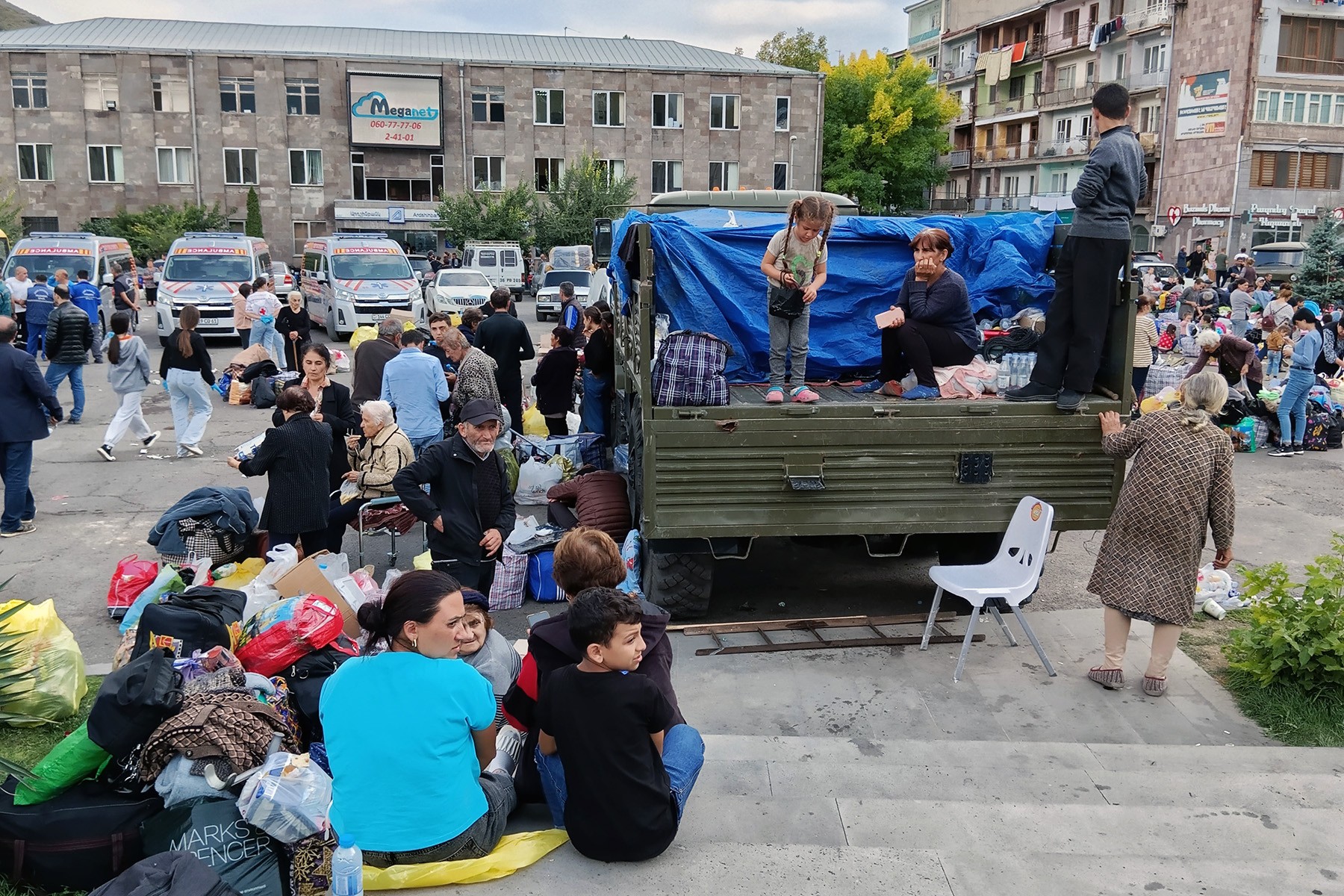
With the exodus of practically the entire population of Nagorno-Karabakh now complete, many of those forced to start new lives from scratch reflect on what — and who — they have left behind.
On the road to Goris on 29 September, cars with bundles tied to their roofs and trucks full of personal possessions filled the road.
Goris, a town in southern Armenia, was the place where those who fled Nagorno-Karabakh in fear arrived to register and find temporary shelter.
The vehicles, with mattresses, baby cribs, household appliances, bicycles, and even a car in a truck, were travelling north — their occupants on the way to start new lives in the rest of Armenia.
But not everyone had the chance to leave with a car full of personal belongings.
The majority of those I met in Goris on 29 September had come to Armenia on government-provided busses. They were among the last to leave.
On 1 October, Nagorno-Karabakh’s Human Rights Defender, Gegham Stepanyan, announced that the last bus had arrived in Goris. Over 100,000 refugees are reported to have arrived in Armenia since Nagorno-Karabakh’s surrender. According to the UN mission dispatched to the region, between 50 and 1,000 ethnic Armenians now remain in Nagorno-Karabakh.
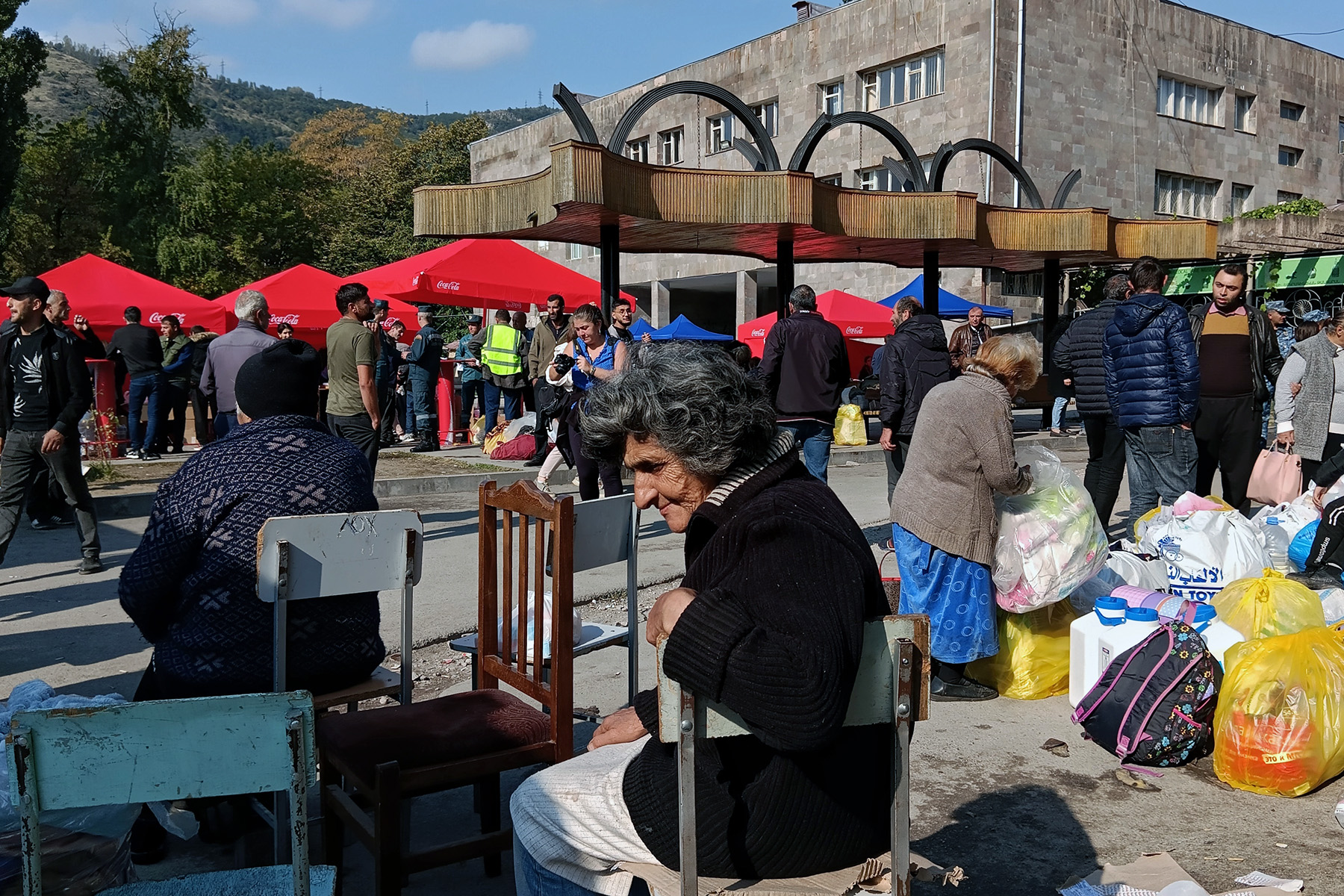
‘No blanket, no mattress, no refrigerator, no TV, no furniture. Everything was left to the Turks’, says Laura Vardanyan, an elderly woman sitting on the steps of a monument’s pedestal. This is how all of the Armenians of Nagrono-Karabakh I spoke with referred to Azerbaijanis.
Laura and her family of six had arrived in Goris that morning, and were waiting to be transferred to Gyumri, the second-largest city in Armenia. They had lived there before moving to the Kajavan (Amiranlar) in Nagorno-Karabakh in 1997.
Laura’s son was injured while baking bread in 2020, during the Second Nagorno-Karabakh War. Her daughter, Mariam Nalbandyan, joins the conversation, adding that during that same war, they lost their house and were forced to move to Martuni (Khojavand) to stay in state-subsidised rental housing.
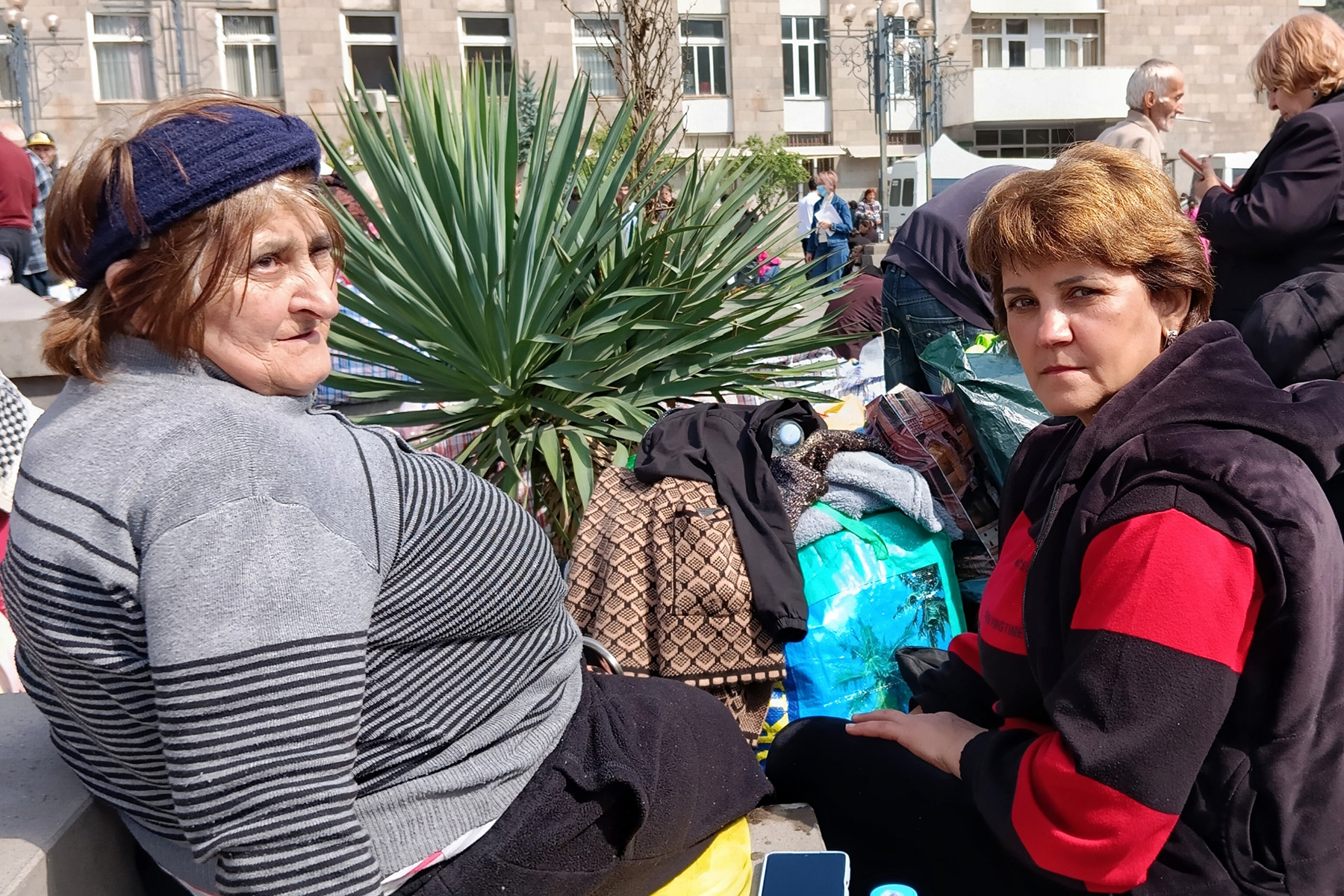
‘We thought it would be good, until the last minute we didn’t believe that we would have to leave’, Mariam says of the aftermath of the 44-day war in 2020, which left the Armenian side defeated.
The family knew of only three people left in Martuni. An elderly woman who did not want to leave her husband’s grave, another man who did not want to leave his son’s grave, and a homeless person.
This time, they managed to take only clothes with them; each packed a bag and left. But Mariam took something special, a piece of marble from the statue of Monte Melkonyan in Martuni.
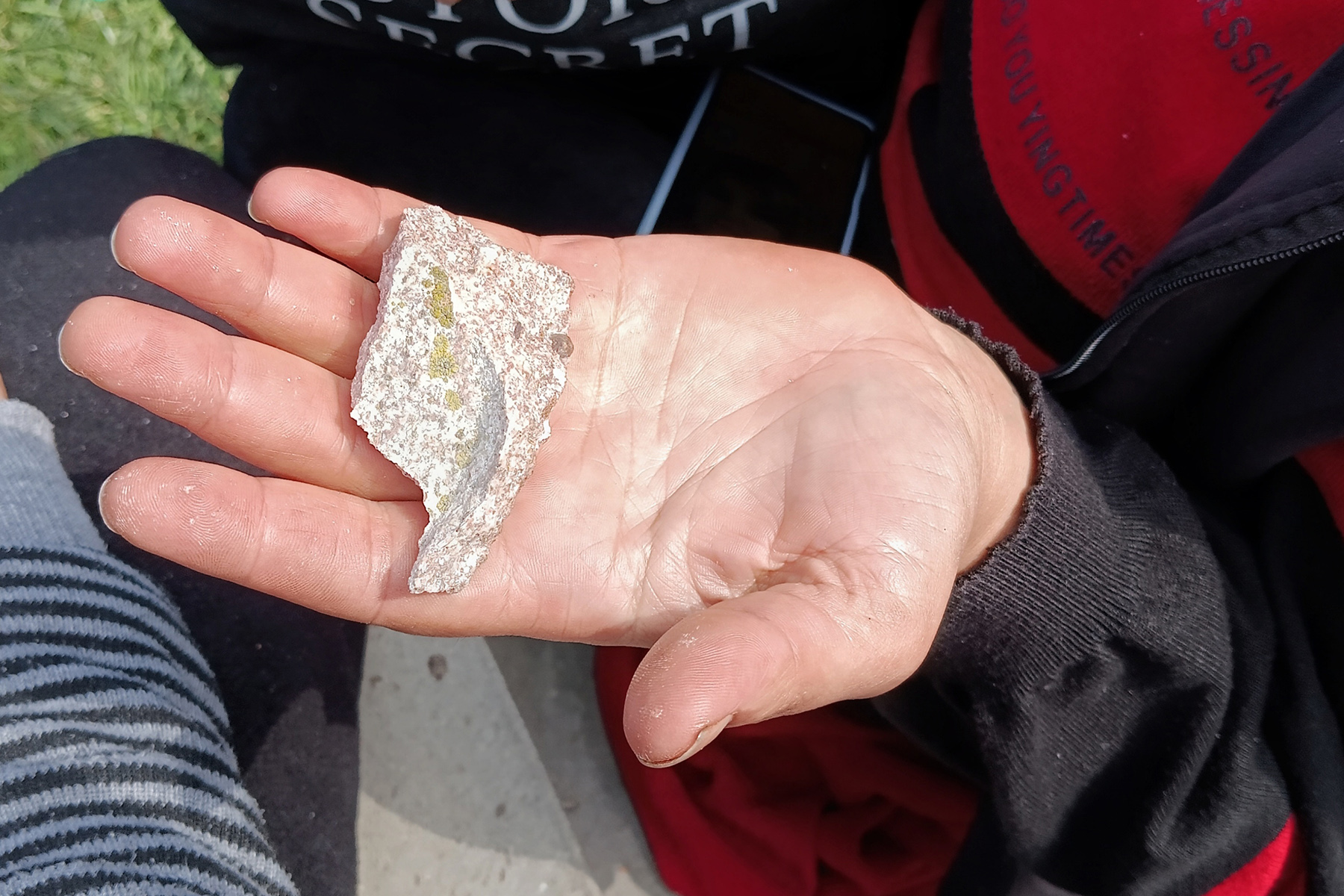
Melkonyan, a commander during the First Nagorno-Karabakh War, is considered a national hero in Armenia and in Nagorno-Karabakh, and played a crucial role in the fighting for Martuni.
‘The statue was removed; whoever could, took a piece from the rubble. That’s the most valuable thing I took, the rest is just material; it’s nothing, we’ll create it. We’re just too broken,’ Mariam says through tears. ‘We have not lost a house, but a homeland’.
‘I wouldn’t want anyone to walk the path we did’
Sitting in the shade not far away was the Arakelyan family from the village of Nerkin Horatagh (Ashaghi Oratagh), in the Martakert (Aghdara) region. Lying next to them were a few bags of belongings packed by their mother while under Azerbaijani fire. They did not know where they would go next.
Sisters Raksana and Regina, 13 and 16, recalled that they had entered the house and were preparing for dinner when Azerbaijan’s attack began on 19 September. Amid the constant news of border tensions, they were expecting something to start, but had no idea it would be this bad.
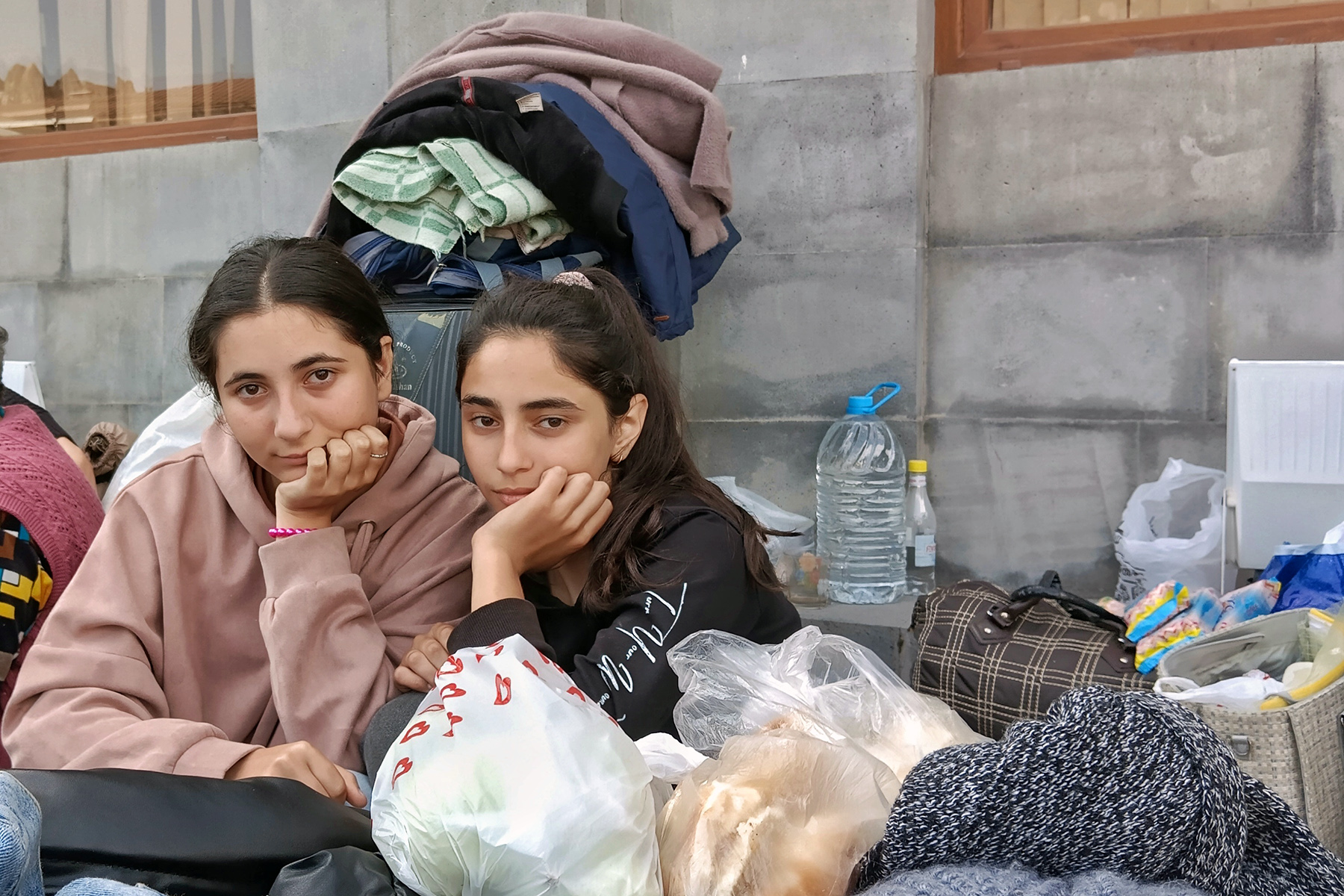
‘Our house is near the school; we came home, it started, we went to the basement, and after three hours, we went to the school basement’, says Regina. ‘Many villagers had gathered there. After the Turks [Azerbaijanis] realised that many people were there, they targeted the school’, she says.
Their father was injured during the first day of the Azerbaijan offensive, on 19 September. He was evacuated to Yerevan by helicopter on 27 September to undergo surgery.
On 20 September, the village was evacuated to the region’s capital, Stepanakert.
Another woman sits on the grass in the square surrounded by children. Sona Nahapetyan, 27, is a mother of four from the village of Drmbon (Heyvali). Sona took the war as thunder at first, something they often experienced, but it was not long before she realised what was happening.
‘The children were at school, terribly scared, and ran home. There were other children who didn’t know which house they entered out of fear. Imagine the situation of those children’, says Sona, adding that still now, her children are afraid of any slightest bang.
They were evacuated to Stepanakert, hungry and cold. Sona’s husband and children came down with a fever.
Sona’s brother-in-law’s wife, Gohar Harutyunyan, 30, compared the latest war with the 44-day war in 2020, saying that while this time it lasted only a day, it was still more terrible.
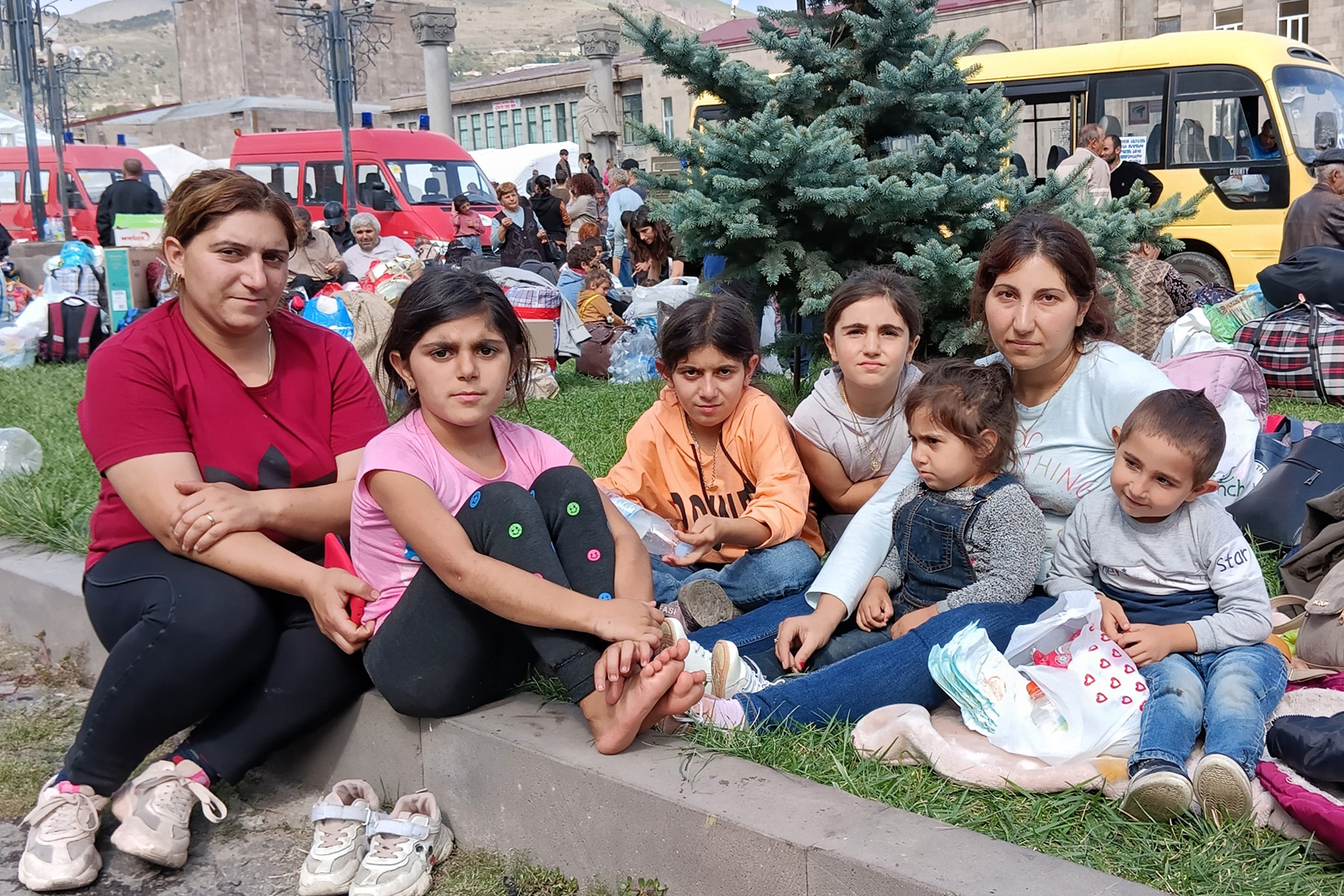
Gohar’s own brother was injured and transported by helicopter to Yerevan. She said she regretted returning to Nagorno-Karabakh after the Second Nagorno-Karabakh War. ‘What we went through, we relived it again’, she says.
‘I wouldn’t want anyone to walk the path we did. The only thing that brings me joy is that my family got out successfully; there was no hope that we would get out,’ Gohar says.
The family left behind their house, created through hard work in the mines and through raising livestock.
But Gohar says she most regrets not having the chance to take the family photos. She did manage to bring the photos of over 30 soldiers who fell during the Second Nagorno-Karabakh War from the State University in Stepanakert, where they stayed for about ten days after their village was evacuated.
She says she did this because she feared that the Azerbaijanis, who were already in Stepeanakert, would dishonour them.
‘They were walking around with their weapons, looking at us, pointing, laughing. You feel humiliated; you don’t have a word to tell them,’ Gohar says.
Keeping the children busy
The Goris town square was also packed with volunteers, walking around, offering water, coffee, or food to everyone, including journalists.
Amidst the chaos, the scene of tragedy for over 100,000 people, determined to go on, a group of children were playing games. According to UNICEF Armenia, 30,000 of the refugees to have arrived in Armenia are children.
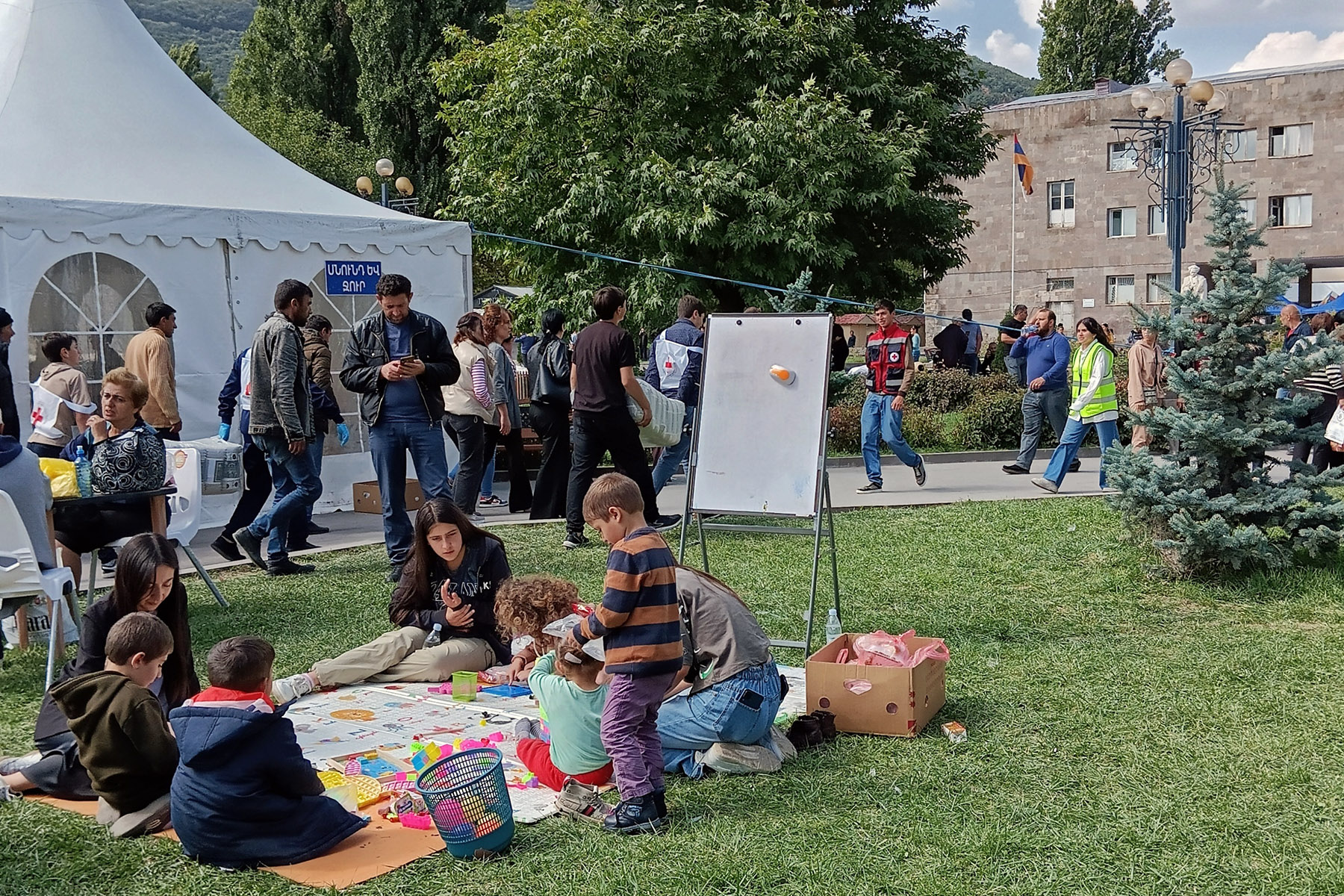
‘During these days, we try to keep the children busy’, says Hasmik Arzumanyan, coordinator at the Barekam Centre, ‘to change their mood a little, after being in those queues, sitting in the same place endlessly, to finally take them back to their games after all these events, and to allow the parents to quietly stand in queues, register, collect clothes, to be sure that the children are in a safe place’.
The Barekam Centre is a project run by a local NGO, Partnership and Teaching, which since 2020 has created children’s daycare centres in several settlements in Syunik Province for children from the region and from Nagorno-Karabakh with the support of the Ministry of Labour and Social Affairs.
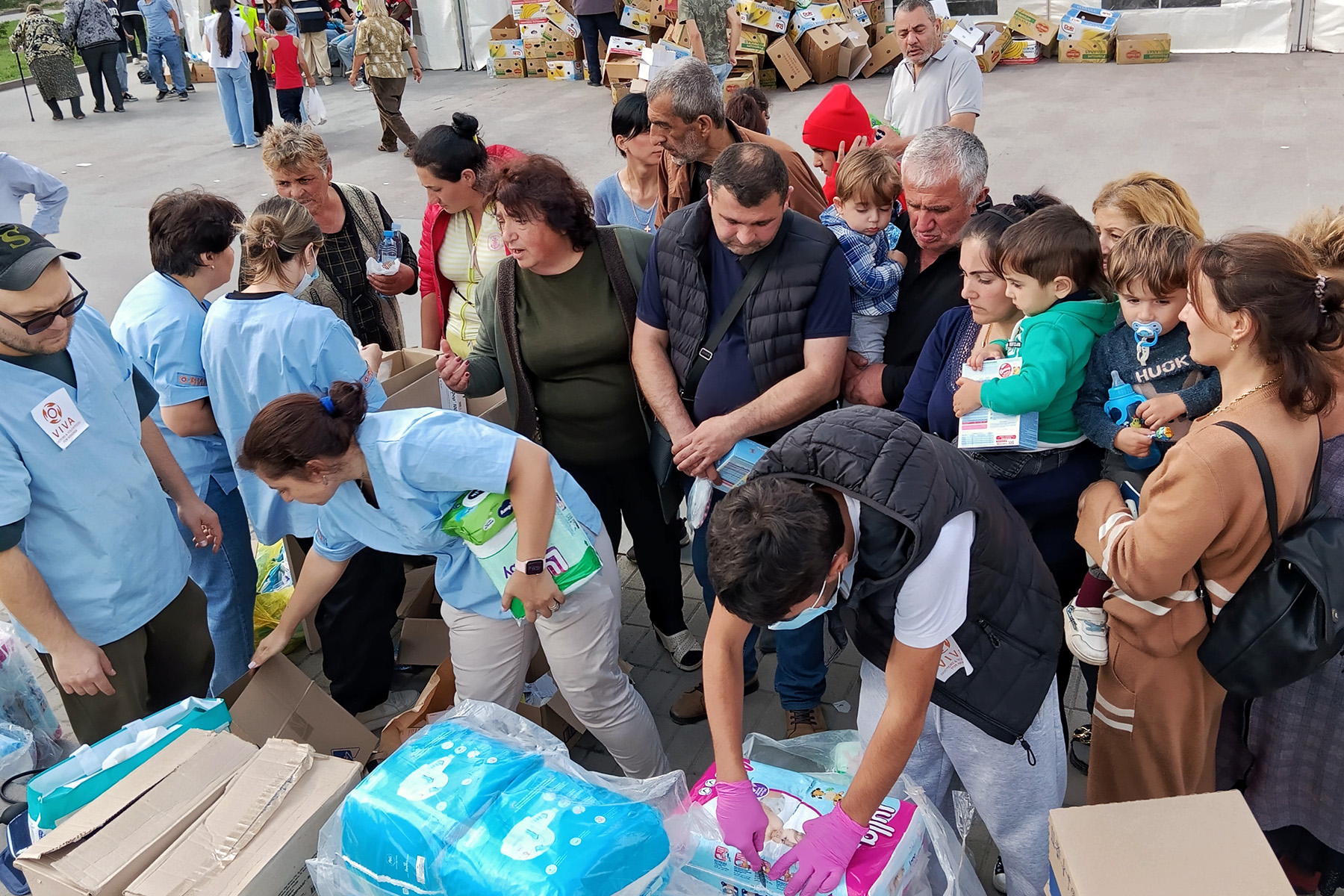
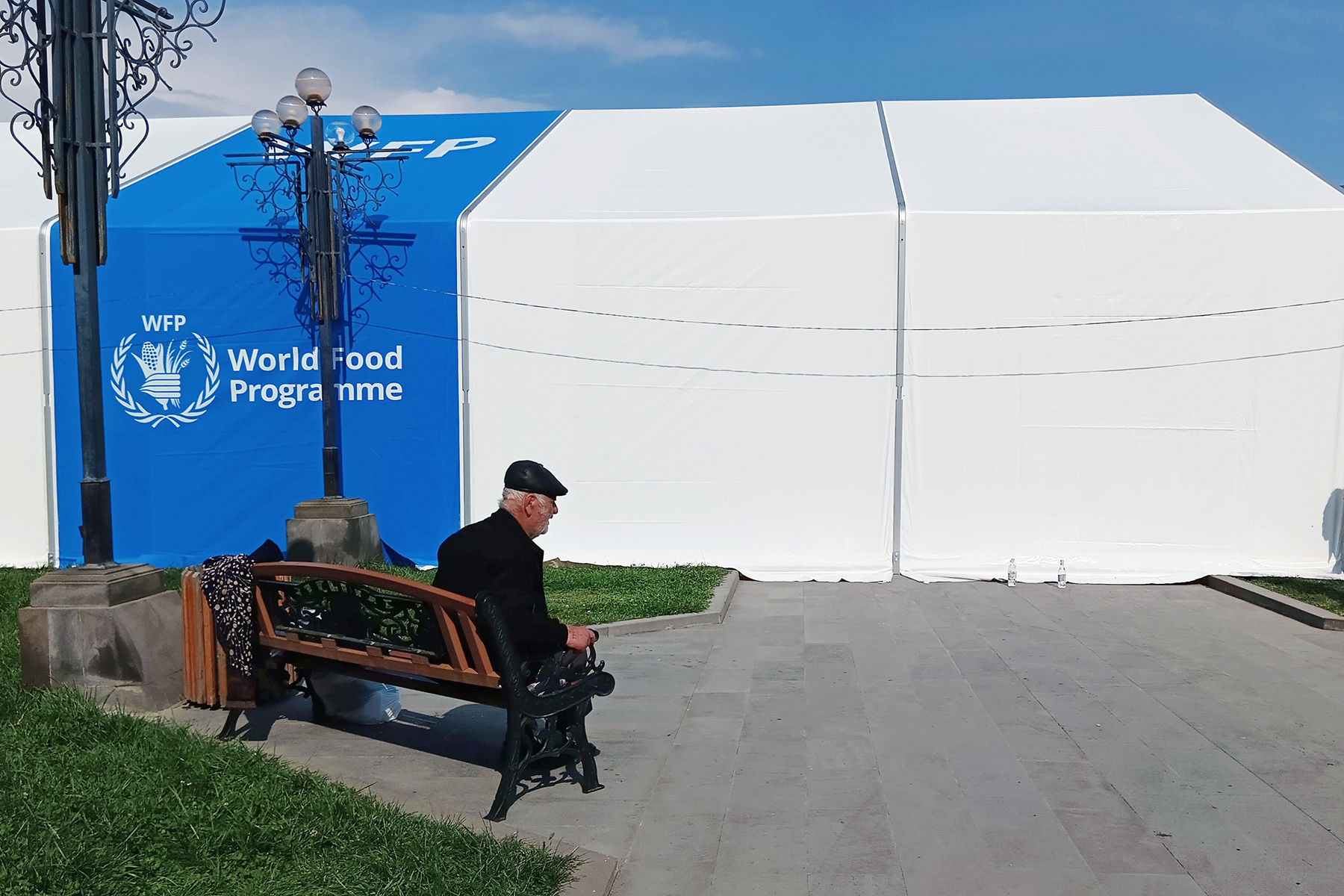
A team from Doctors Without Borders (MSF), an international humanitarian organisation, is also among those working with the Armenians arriving from Nagorno-Karabakh. They are responding with mental health support, mainly focusing on psychological first aid to those in emotional crisis after more than nine months under blockade and the long trip into exile, leaving their homes behind.
‘So they come in a state of shock, showing a lot of anxiety, acute stress, a lot of deep depression’, says Franking Frias, MSF’s Country Director for Armenia. ‘Some of them have psychosomatic issues — it means they manifest physically these emotional things with pains in different parts of the body.’
‘Of course, some of them have clear medical problems, some of them, these physical issues are the expression of this mental harm, because they have a lot of negative emotions’, Frias tells OC Media.
A people scattered
In the town square of Goris were people of all ages sharing the same fate, united in this town one last time before being sent to all corners of Armenia, where they must make their new homes.
For many of the refugees, the location of their new accommodation is another problem they must now face.
Those offered by the government are primarily in the Tavush, Lori, Gegharkunik and Shirak provinces, while most want to stay nearer to the capital, Yerevan.
Many also expressed concerns that some of the locations on offer were on the border with Azerbaijan, regions targetted by Azerbaijani fire.
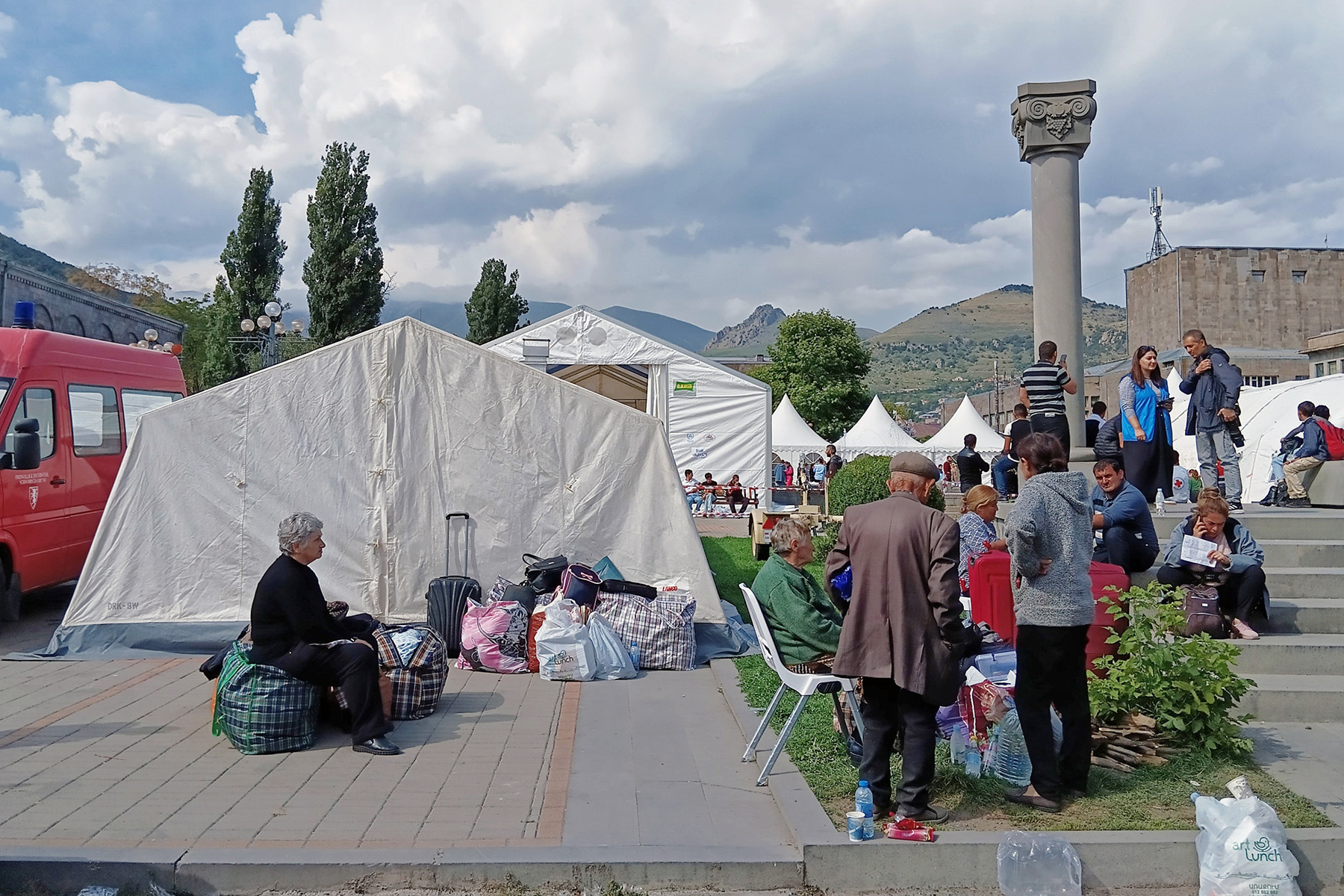
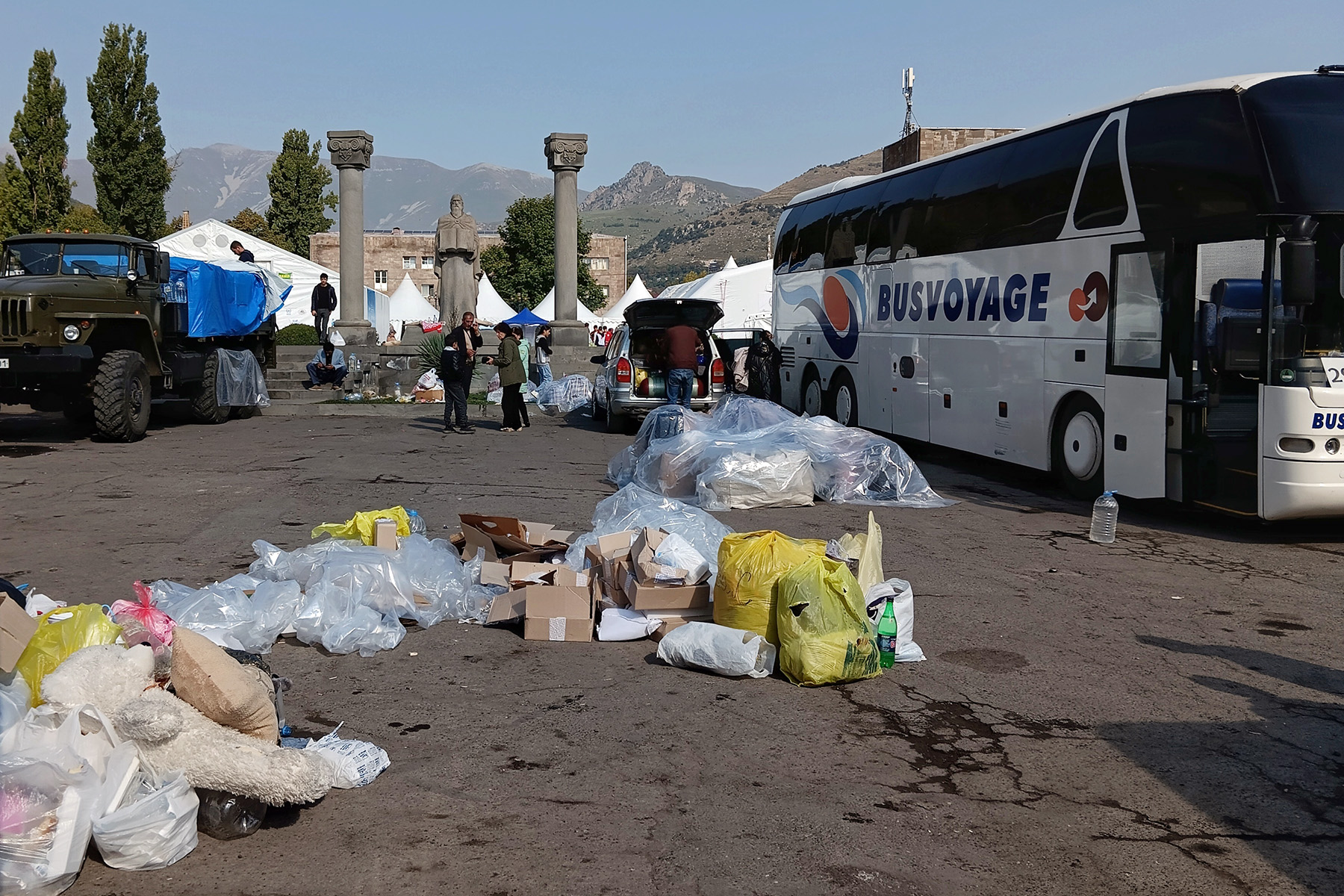
Angela Baghdasaryan, 40, from the town of Chartar in the Martuni region of Nagorno-Karabakh, faces such an issue. She and her family have been offered accommodation in Shirak Province, but they do not want to stay there, as her son is studying at Yerevan State University. He is currently living in a rented flat.
‘I won’t be able to live there [in Yerevan], he won’t be able to leave there either’, Angela says. ‘We don’t have jobs. My husband was a soldier, and he doesn’t have a job at the moment. I don’t have one either. We want to go to some village near Yerevan, in the Ararat Province, where my son could live with us so that we don’t have to pay his rental costs; we could live with that money’, she says.
Angela and her family were the last people to leave Chartar, and among the last to leave Stepanaket.
Their neighbour, Ella Suleimanyan, 63, joins the conversation. Asked if there was anything she had left behind and regretted not taking, Ella answered only that wished she had taken a handful of soil from the grave of her nephew, who was killed in the Azerbaijani offensive.
Uncertainty and death
In the conversations I had with refugees during my time in Goris, all were punctuated with a sense of uncertainty for the future. For some, this uncertainty extended to the fate of their loved ones.
The conflict in Nagorno-Karabakh has led to countless deaths and personal tragedies, and the latest rushed exodus was no different.
On 29 September, Armenian Health Minister Anahit Avanesyan confirmed the rumours that not everyone had survived the trip, and that there had been deaths on the road from Stepanakert to Goris.
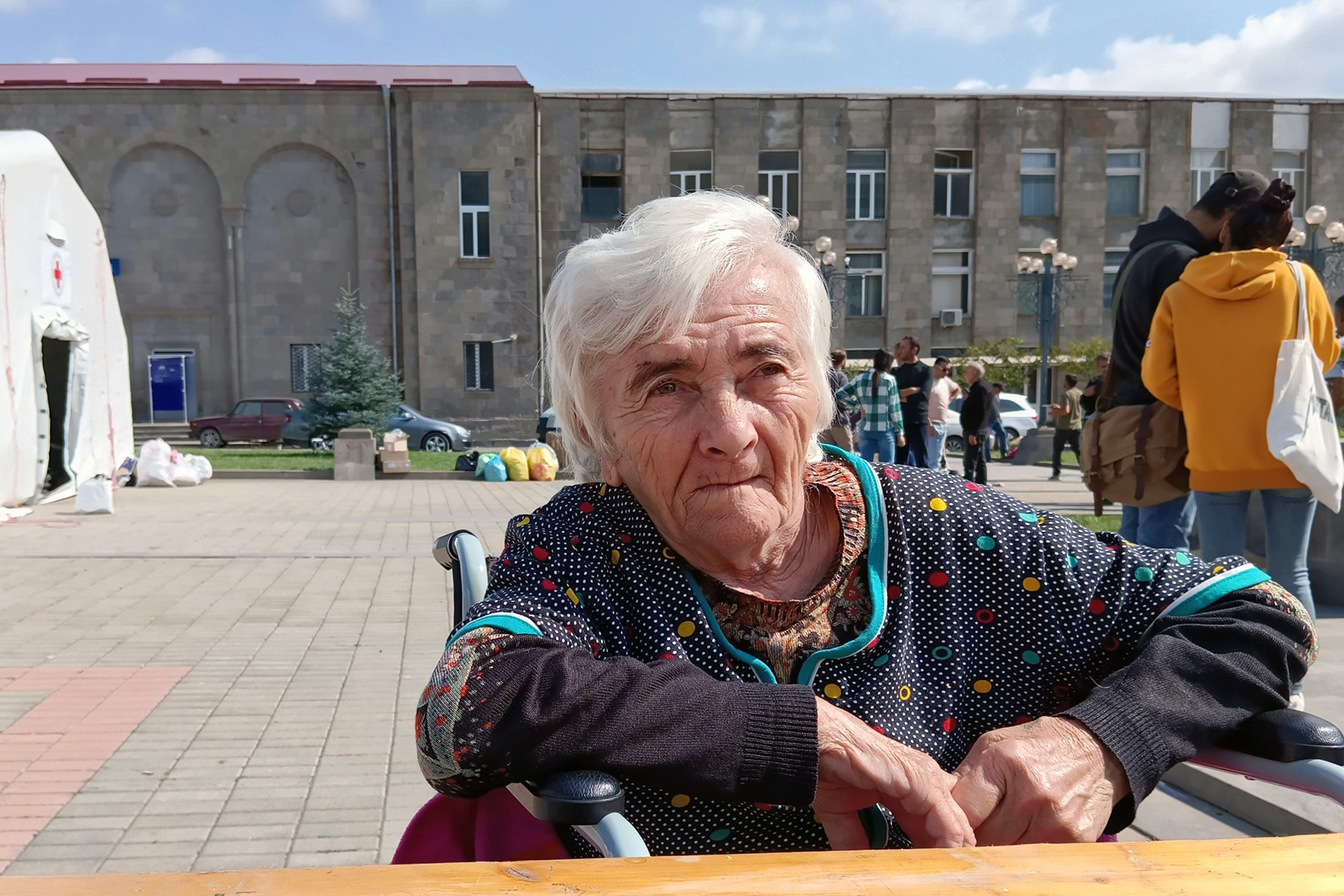
Before returning to Yerevan on Saturday morning, I met a woman sitting on a bench next to a couple of bags in the town square of Goris. She was accompanying a family from Nagorno-Karabakh whom she had hosted for several days.
The family had gone to get a SIM card, to try to find news from their son and son-in-law. The two had gone to get fuel from a fuel depot on 25 September. In the chaos of the evacuation, the depot exploded, killing at least 170. The family had not heard from them since.
I gave the woman the number for the Ministry of Health’s hotline, so the family could find out if their relatives’ names were on the list of those hospitalised. If not, likely they too were killed in the explosion — among the tens of thousands of others to have died in over three decades of conflict.
For ease of reading, we choose not to use qualifiers such as ‘de facto’, ‘unrecognised’, or ‘partially recognised’ when discussing institutions or political positions within Abkhazia, Nagorno-Karabakh, and South Ossetia. This does not imply a position on their status.




